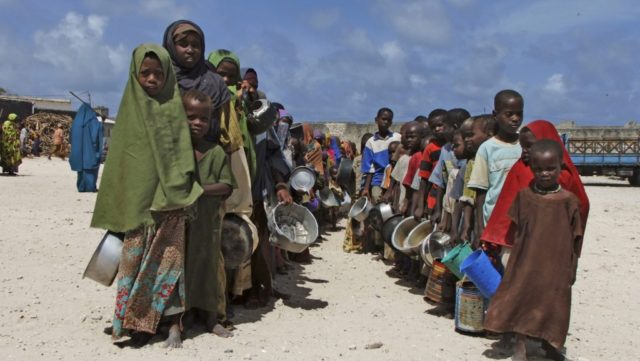Economists and scientists are at odds over the much lauded EAT Lancet diet plan, designed to make it possible to feed 10 billion humans by 2050 and not kill the Earth in the process. There’s no doubt it’s nutritious and environmentally sustainable, but can we afford it?
 There are already millions starving in central-eastern Africa.
There are already millions starving in central-eastern Africa.
They have nothing to spend on food, and no food
is available if they could afford it…
I’ve commented in this space, in the past, on the EAT Lancet recommended diet, designed by scientists and nutritionists to be both healthy for the people who follow it and healthy – sustainable – for the planet. At an estimated cost per day of (US)$2.84 per person, the diet sounds like a great deal all round. But a new study by economists suggests it’s not a viable solution, going forward, for many who are already not getting enough to eat.
What they did
Researchers from the Friedman School of Nutrition Science and Policy at Tufts University and the International Food Policy Research Institute (IFPRI) looked at the EAT Lancet recommendations and confirmed that, in itself, the blueprint for a universal sustainable, healthy diet was fine. But they also determined that the plan failed to meet one critical criterion.
What the critics said
“When formulating this pioneering benchmark diet – addressing individual health outcomes as well as the health of the planet – the Commission deliberately did not take its cost into account,” said study report Senior Author Dr. Will Masters, of Tufts.
“We found that the global median of the proposed diet would cost (US)$2.84 per day as of 2011. In low-income countries, that amounts to 89.1 percent of a household’s daily per capita income, which is more than people can actually spend on food. In high-income countries, we found that the EAT-Lancet reference diet would cost 6.1 percent of per-capita income, which is often less than what people now spend on food,” said Dr. Kalle Hirvonen, study report Lead Author, of IFPRI.
The takeaway
“Even if many poor consumers were to aspire to consume healthier and more environmentally sustainable foods, income and price constraints frequently render this diet unaffordable. Increased earnings and safety-net transfers, as well as systemic changes to lower food prices, are needed to bring healthy and sustainable diets within reach of the world’s poor,” Hirvonen concludes.
My take
Masters and Hirvonen lost me, vis à vis the details, at the point where they revealed that the EAT Lancet Commission didn’t properly address the affordability of its recommendations. Did these these ivory tower eggheads actually just forget to take that into account?
Or did they agree among themselves that they would concentrate on formulating a diet that a theoretical ‘average’ family could afford? That’s fine for 4 out of 5 folks, in the richer countries, but it leaves almost 1 in 5 – mainly in South Asia and Africa – starving. Is their final report a veiled admission that we can’t come up with a way to feed 10 billion people by 2050?
If Masters and Hirvonen and their team are right in their assessment of the EAT Lancet diet, then I suggest somebody send the Commission back to the drawing board to try again. Or give the job to somebody new who might be able to provide some new insights on the problem…
~ Maggie J.

